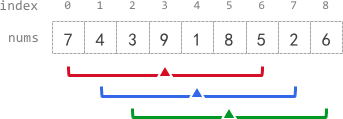You are given an integer n indicating there are n people numbered from 0 to n - 1. You are also given a 0-indexed 2D integer array meetings where meetings[i] = [xi, yi, timei] indicates that person xi and person yi have a meeting at timei. A person may attend multiple meetings at the same time. Finally, you are given an integer firstPerson.
Person 0 has a secret and initially shares the secret with a person firstPerson at time 0. This secret is then shared every time a meeting takes place with a person that has the secret. More formally, for every meeting, if a person xi has the secret at timei, then they will share the secret with person yi, and vice versa.
The secrets are shared instantaneously. That is, a person may receive the secret and share it with people in other meetings within the same time frame.
Return a list of all the people that have the secret after all the meetings have taken place. You may return the answer in any order.
Example 1:
Input: n = 6, meetings = [[1,2,5],[2,3,8],[1,5,10]], firstPerson = 1 Output: [0,1,2,3,5] Explanation: At time 0, person 0 shares the secret with person 1. At time 5, person 1 shares the secret with person 2. At time 8, person 2 shares the secret with person 3. At time 10, person 1 shares the secret with person 5. Thus, people 0, 1, 2, 3, and 5 know the secret after all the meetings.
Example 2:
Input: n = 4, meetings = [[3,1,3],[1,2,2],[0,3,3]], firstPerson = 3 Output: [0,1,3] Explanation: At time 0, person 0 shares the secret with person 3. At time 2, neither person 1 nor person 2 know the secret. At time 3, person 3 shares the secret with person 0 and person 1. Thus, people 0, 1, and 3 know the secret after all the meetings.
Example 3:
Input: n = 5, meetings = [[3,4,2],[1,2,1],[2,3,1]], firstPerson = 1 Output: [0,1,2,3,4] Explanation: At time 0, person 0 shares the secret with person 1. At time 1, person 1 shares the secret with person 2, and person 2 shares the secret with person 3. Note that person 2 can share the secret at the same time as receiving it. At time 2, person 3 shares the secret with person 4. Thus, people 0, 1, 2, 3, and 4 know the secret after all the meetings.
Example 4:
Input: n = 6, meetings = [[0,2,1],[1,3,1],[4,5,1]], firstPerson = 1 Output: [0,1,2,3] Explanation: At time 0, person 0 shares the secret with person 1. At time 1, person 0 shares the secret with person 2, and person 1 shares the secret with person 3. Thus, people 0, 1, 2, and 3 know the secret after all the meetings.
Constraints:
2 <= n <= 1051 <= meetings.length <= 105meetings[i].length == 30 <= xi, yi <= n - 1xi != yi1 <= timei <= 1051 <= firstPerson <= n - 1
Solution: Union Find
Sorting meetings by time.
At each time stamp, union people who meet.
Key step: “un-union” people if they DO NOT connected to 0 / known the secret after each timestamp.
Time complexity: O(nlogn + m + n)
Space complexity: O(m + n)
C++
|
1 2 3 4 5 6 7 8 9 10 11 12 13 14 15 16 17 18 19 20 21 22 23 24 25 26 27 |
// Author: Huahua class Solution { public: vector<int> findAllPeople(int n, vector<vector<int>>& meetings, int firstPerson) { map<int, vector<pair<int, int>>> events; for (const auto& m : meetings) events[m[2]].emplace_back(m[0], m[1]); vector<int> p(n); iota(begin(p), end(p), 0); function<int(int)> find = [&](int x) { return p[x] == x ? x : (p[x] = find(p[x])); }; p[firstPerson] = 0; for (const auto& [t, s] : events) { for (const auto [u, v] : s) p[find(u)] = find(v); for (const auto [u, v] : s) { if (find(u) != find(0)) p[u] = u; if (find(v) != find(0)) p[v] = v; } } vector<int> ans; for (int i = 0; i < n; ++i) if (find(i) == find(0)) ans.push_back(i); return ans; } }; |
